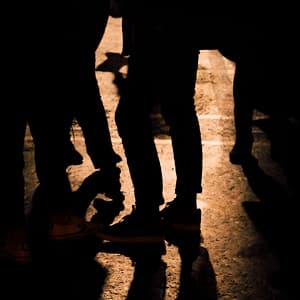 Between February of 2014 and March of 2017, researchers from Loyola University New Orleans’s Modern Slavery Research Project (MSRP) and The Field Center for Children’s Policy, Practice & Research at the University of Pennsylvania worked together to learn more about homelessness and human trafficking. Almost 1,000 youth were interviewed, and all of them participated on a volunteer basis.
Between February of 2014 and March of 2017, researchers from Loyola University New Orleans’s Modern Slavery Research Project (MSRP) and The Field Center for Children’s Policy, Practice & Research at the University of Pennsylvania worked together to learn more about homelessness and human trafficking. Almost 1,000 youth were interviewed, and all of them participated on a volunteer basis.
Their results were helpful and heartbreaking, startling and motivating: almost 1 in 5 young people interviewed had experienced human trafficking. 17% of those youth were victims of sex trafficking and 6% were victims of labor trafficking. The majority of labor trafficking cases had to do with dealing drugs.
The Loyola study, completed in 2016, gave more detailed information on how youth are introduced to traffickers and what makes a young person more susceptible to trafficking. It found that even when young people aren’t lured into trafficking they’re almost sure to encounter it — 91% of youth interviewed said they had been approached by someone who gave them an opportunity to earn money that seemed “too good to be true.”
Further, LGBTQ youth were far more likely to be trafficked. 19% of the Loyola study’s respondants were LGBTQ, but they made up 36% of sex trafficking victims.
The study backs up an idea often seen amongst homeless youth — because of their vulnerability they are more likely to experience further trauma like trafficking. “Homeless youth are vulnerable to both sex and labor trafficking because they tend to experience a higher rate of the primary risk factors to trafficking: poverty, unemployment, a history of sexual abuse, and a history of mental health issues,” the Loyola study explains.
This new information does not come as a surprise, but it does compel us to keep working hard. Second Story’s teen shelter is often the first stop for young people who are victims of human trafficking in the metro DC area. We provide a safe place for them to transition from their trauma to longer-term, more intensive care.
We also work to prevent young people from ever being introduced to human trafficking. Second Story for Teens in Crisis serves as a short-term haven for young people who have run away or are experiencing a crisis. The shelter works with youth and their families to address mental health concerns, issues in the home or at school, or other factors that might lead a young person to become homeless. Second Story in the Community also provides a safe haven for young people who might otherwise spend their after-school time on the streets, vulnerable to people who might try to take advantage of them. These Safe Youth Projects and the Teen Center also educate young people on what traffickers might say or do so that they know how to recognize danger in the moment.
You can read a full report here.

